Key takeaways:
- Soil biodiversity is crucial for ecosystem health, influencing nutrient cycling and plant resilience against pests and climate change.
- Methods to enhance soil health include composting, cover cropping, and reducing chemical inputs, which support beneficial microorganisms.
- Organic practices like mulching, biochar incorporation, and crop rotation improve soil vitality and promote sustainability in vineyards.
- Continuous improvement strategies involve diverse cover crops, regular soil health assessments, and collaboration with local producers for knowledge sharing.
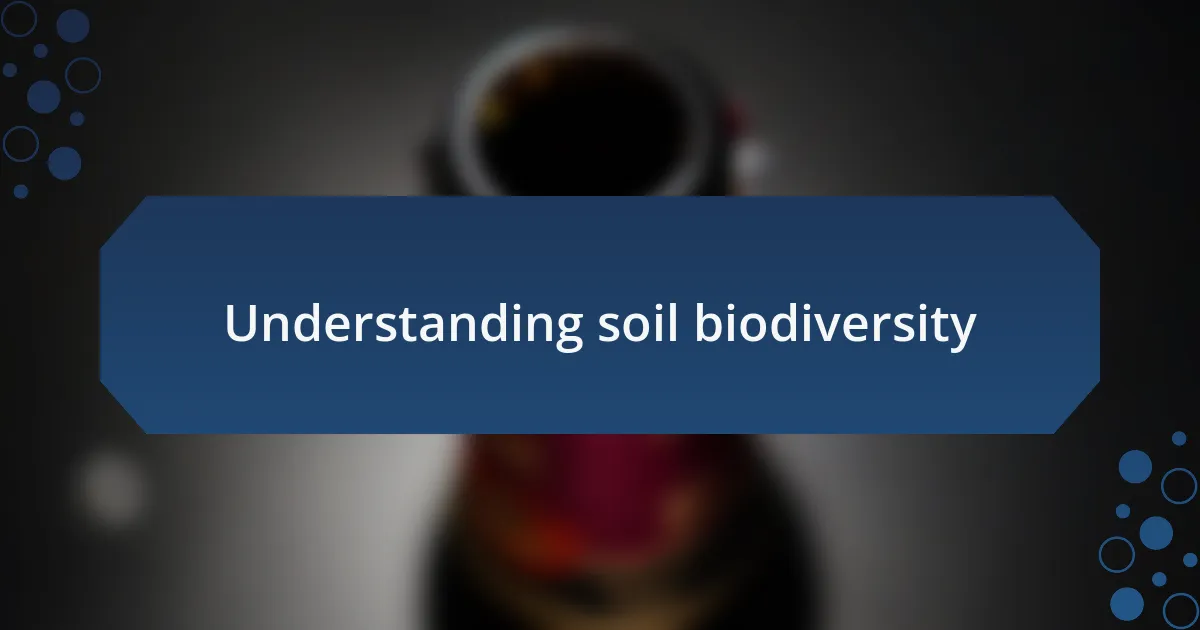
Understanding soil biodiversity
Soil biodiversity encompasses the vast array of living organisms in the soil, including bacteria, fungi, insects, and larger animals. Each of these components plays a unique role in maintaining the health of the ecosystem. I remember my initial surprise when I realized how a single teaspoon of healthy soil can contain millions of microorganisms, each contributing to nutrient cycling and plant health.
When I first started exploring organic wine production, I was struck by the interconnectedness of these organisms. Not just a bunch of tiny creatures, they form intricate relationships that support crops and ultimately influence the taste and quality of the wine. Have you ever thought about how those little microbes might be the unsung heroes behind your favorite bottle?
In my experience, fostering soil biodiversity can feel like nurturing a hidden universe beneath our feet. It’s fascinating to consider that the more diverse the soil life, the more resilient the ecosystem becomes, making it better equipped to withstand challenges like pests and climate changes. There’s something undeniably empowering in knowing that by enhancing soil biodiversity, we’re also enhancing the entire vineyard’s vitality and sustainability.
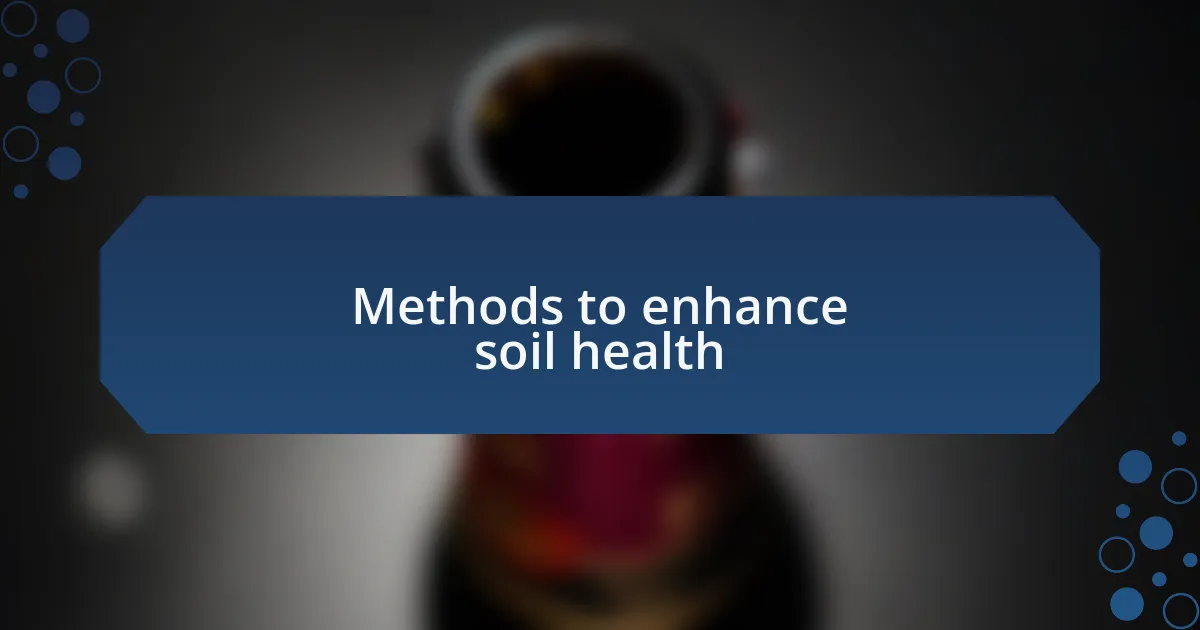
Methods to enhance soil health
To enhance soil health, one effective method is to incorporate organic matter through composting. I recall visiting a vineyard where the owner proudly showcased their compost pile, explaining how it nourished the soil with essential nutrients. This not only improved the structure but also attracted beneficial microorganisms that are vital for plant growth. Have you ever tried adding compost to your garden? It can transform the soil into a thriving habitat for diverse organisms.
Cover cropping is another powerful technique I’ve witnessed in action. I remember working alongside a vineyard team planting clover and vetch during the off-season. These cover crops not only prevented soil erosion but also fixed atmospheric nitrogen, enriching the soil naturally. It’s like giving the vineyard a seasonal boost while simultaneously providing a habitat for insects and worms.
Additionally, reducing chemical inputs and embracing natural pest control methods can significantly support soil health. Reflecting on my experience, I’ve seen vineyards thrive after implementing integrated pest management, which encourages the existence of beneficial predators. This shift not only maintains the delicate balance of soil life, but it also promotes a more sustainable ecosystem. Don’t you think it’s inspiring to witness such harmony in nature?
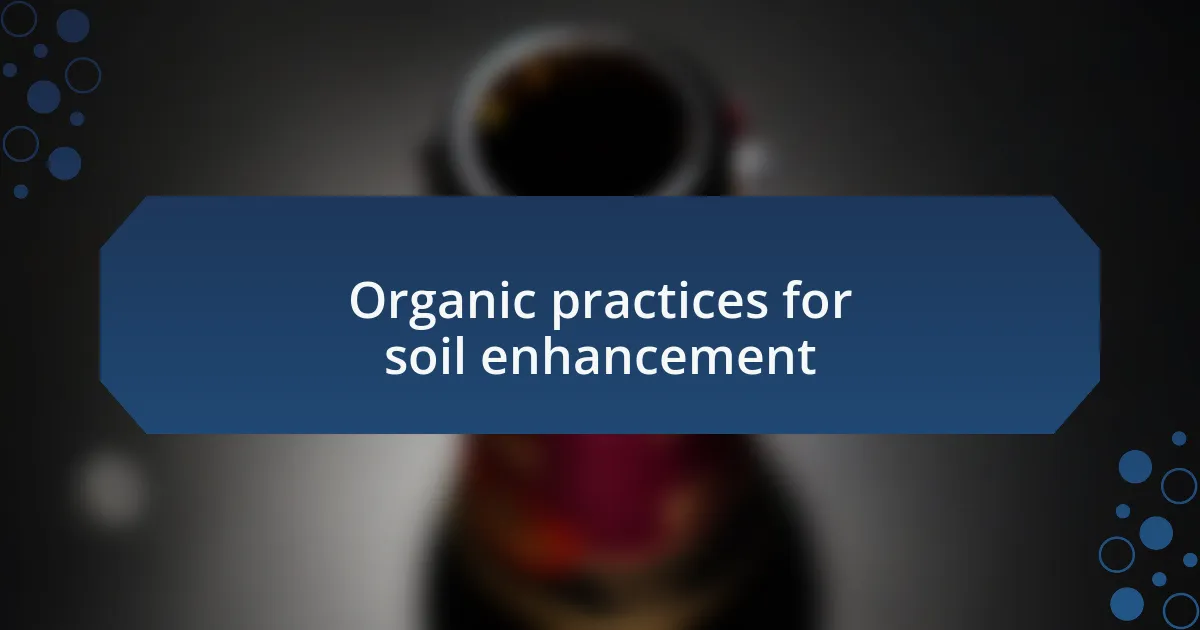
Organic practices for soil enhancement
One organic practice that often gets overlooked is mulching. I remember the satisfaction of mulching around plants with straw, which not only retained moisture but also provided a habitat for all sorts of beneficial organisms. Have you ever felt the rich soil beneath a layer of mulch? It’s like a community coming together to nurture life.
Incorporating biochar into the soil is another fascinating approach I’ve explored. When I first learned about biochar, I was hesitant; it sounded too scientific. However, after seeing its ability to enhance nutrient retention and improve microbial activity firsthand, I became a true believer. It’s amazing how this ancient practice can guide the future of organic farming.
Another method that continues to amaze me is the practice of rotating crops. I’ve participated in a vineyard that changed its planting every season, and the difference was palpable. Observing healthier vines and a noticeable decrease in pests made me question how we could ignore such a simple yet effective strategy. What if we all embraced more dynamic systems like this in our own gardens? The results could be transformative.
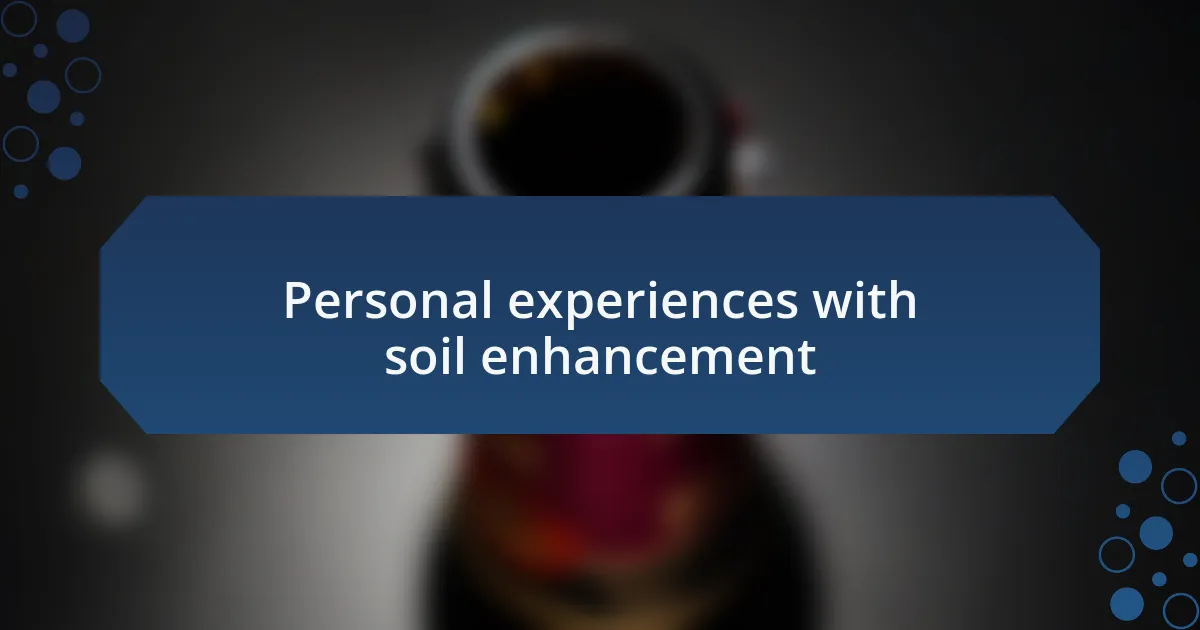
Personal experiences with soil enhancement
I vividly remember the first time I experimented with cover cropping in my vineyard. The burst of green that filled the rows during the off-season was visually stunning, but what struck me most was the way the soil felt. Digging my hands into that rich, loamy earth after a winter of clover and vetch broke down was exhilarating. The life teeming within it made me wonder: can we ever fully appreciate the unseen communities that support our crops?
Another transformative moment for me was when I started using compost tea. Mixing up a batch in the early morning, I was initially skeptical about its benefits. However, after applying it to the vines and watching their resilience improve over time, I found myself feeling almost emotional. It’s remarkable how a simple liquid can energize the ecosystem and foster connections within the soil. Have you ever witnessed such a swift change, where nature responds almost immediately?
Additionally, I’ve learned to embrace the power of worms in my soil through vermicomposting. The first time I added their castings directly into the planting holes, I felt like I was giving my vines a substantial gift. The laughter I shared with fellow growers, as we watched them flourish, reminded me that these little beings are nature’s quiet superheroes. Do you think we often overlook just how vital these creatures are to the health of our soil?
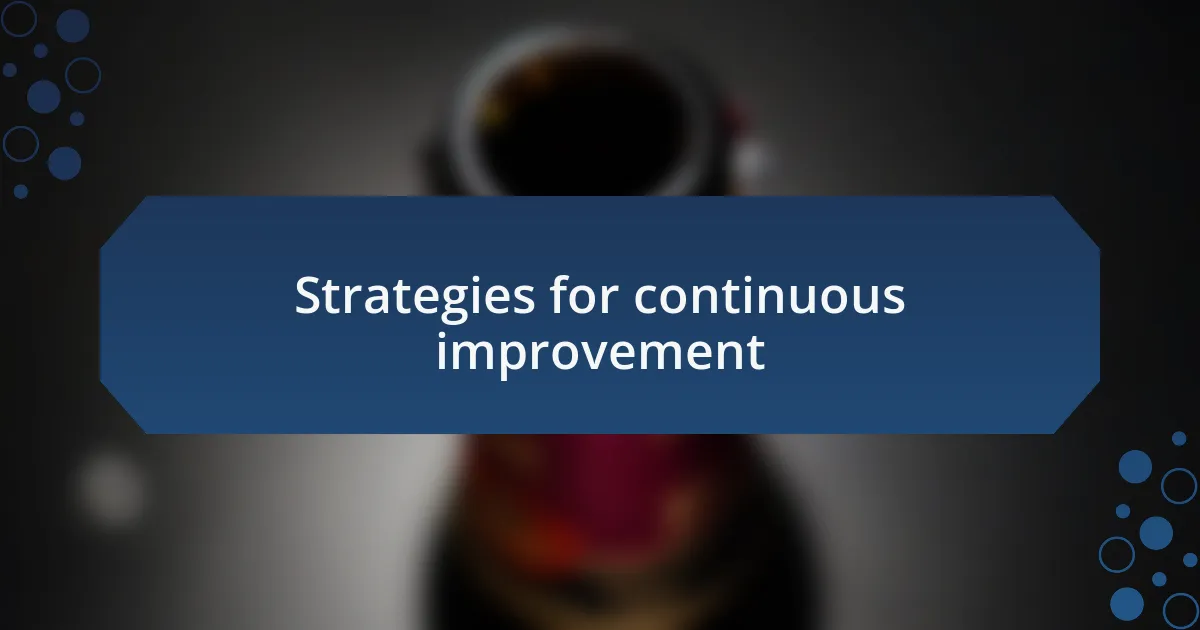
Strategies for continuous improvement
One strategy I’ve adopted for continuous improvement in soil biodiversity involves rotating my cover crops. While cultivating a mix of legumes, grains, and brassicas, I’ve noticed how each contributes uniquely to the soil’s health. It’s fascinating to observe how certain crops shape the microbial community, enhancing nutrients in ways I didn’t initially expect.
Regular assessments of soil health have become a cornerstone of my approach. After incorporating bioindicators like earthworms and beneficial microbes, I’ve made it a habit to monitor their populations closely. This practice not only builds a deeper connection with my vineyard but also serves as a reminder: how can we nurture life if we don’t understand its current state?
I’ve also begun hosting workshops with other local producers to share insights and experiences. Those conversations often reveal new techniques and strategies I hadn’t considered. Have you ever found that collaborative learning can spark creativity and innovation? For me, it’s been a continuous journey toward improvement that reinforces the importance of community in organic farming.